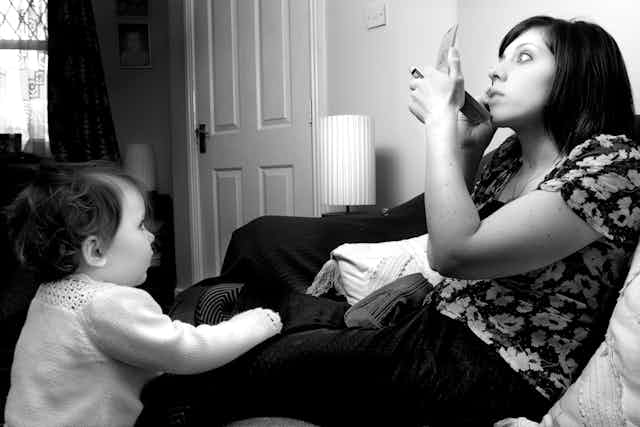It may seem somewhat intuitive, but learning through observation is one of the most potent ways humans learn a new skill. We see someone moving in a certain way and we copy it. But what happens when the person doing the watching is unable to move, such as those who have had a bad stroke? That would surely affect skill acquisition.
Well, maybe not.
Recent work by myself and Professor Jason Mattingley at the Queensland Brain Institute has shown that observing other people perform a movement can still influence the type of brain reorganisation that occurs when we learn new skills, even when no “active” (i.e physical) movement occurs.
Back to basics
Exactly how our brains learn from observing and performing the actions of others is still a subject of great scientific interest.
But the pioneering work of Professor Giacomo Rizzolatti in the 1990s shed light on this topic. A fascinating set of neurons in the macaque monkey was identified that started firing not only when the monkey performed a task, but also when the monkey observed someone else performing the same task.
These neurons seemed to mirror what was being observed, and were therefore called “mirror neurons”.
Although initially identified in monkeys, there is increasing evidence that a similar set of neurons also exists in humans – and these seem to be important in learning through imitation and understanding the actions of others.
In simple terms, when we learn a new skill, or store a memory, our brains are modified to store that information for long periods of time. Known as plasticity, this process leads to structural and functional changes to the brain.
TMS
For a while now, scientists have been able to use various forms of non-invasive brain stimulation to “artificially” induce plasticity in the human brain.
One of these, transcranial magnetic stimulation (TMS), involves delivering a brief, high-intensity electric current through a coil placed on a person’s head, as per the photograph below.
The coil painlessly activates nerve cells in the brain and therefore influences brain function. TMS can also induce plasticity in the motor regions of the brain by delivering repeated TMS pulses.

There has been increasing interest in using such techniques to promote functional recovery after various types of brain injury, especially stroke.
One major advantage of TMS is that it can induce plasticity without the need for the person to physically move.
But unfortunately, such insights fall into the same pattern as much scientific research: although it sounds good in theory, it’s much more difficult to demonstrate experimentally.
One reason is that not everyone’s brain responds to the TMS in the way we’d predict. All our brains have a slightly different anatomical structure - some of us have thicker skulls, for example.
This dramatically influences the “dose” of TMS that each person receives. Other factors we know to be important include genetics, age and gender.
Another factor that seems critical in predicting how a brain will respond to TMS-induced plasticity is what the brain was doing just before receiving TMS. A brief period of prior stress or exercise profoundly influences plasticity induction.
Our research
Last year, Professor Mattingley and I began a series of experiments to investigate whether getting people to observe someone else performing a task could influence how they responded to subsequent TMS-induced plasticity.
Volunteers attended two sessions during which they watched a 15 minute video of someone else repeatedly reaching for and grabbing a small ball. This was followed by a 15-minute period of TMS to induce plasticity.
The only difference between the two sessions related to which hand was being observed – in one session it was the left, in the other, the right.
We discovered that this difference substantially influenced how people responded to subsequent TMS.
When they observed the right hand performing the task (which activates the left side of the brain) and we stimulated the left side of the brain, we found a huge increase in plasticity. But when people observed the left hand performing the task, there was no change.
This suggests that observing actions can enhance plasticity, but the observed actions need to be closely related to the skill being learnt, and also to the hand doing the learning. It also suggests that observing the actions of others may provide a way to enhance the brain reorganisation that takes place when we learn a new skill.
In this case the reorganisation was “artificially” induced with TMS and, importantly, the whole process was not reliant on any movement by the observer.
Where to now?
Although this is an exciting prospect, the research to-date has only been conducted on young, healthy participants. We are keen to investigate whether we can translate our findings into the rehab ward.
In theory, a rehabilitation strategy could be tailor-made for each person who has had a stroke. If the person has weakness in the muscles required to perform a precision grip, they could be given a video showing repeated precision grips, following which they receive TMS to strengthen those networks.
Our research may offer future hope to stroke victims who are unable to move their limbs, and therefore are currently unable to gain maximal benefit from physiotherapy.

